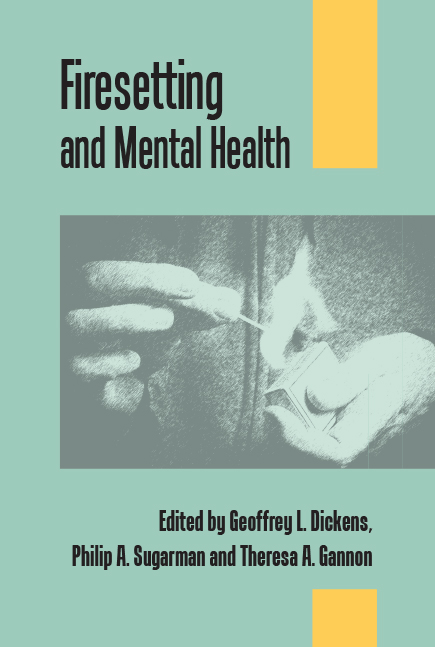Book contents
- Frontmatter
- Contents
- List of figures, tables and boxes
- List of contributors
- Preface
- Part I Theory and research
- 1 Adult firesetters: prevalence, characteristics and psychopathology
- 2 Theories on arson: the action systems model
- 3 Differentiating firesetters: lessons from the literature on motivation and dangerousness
- 4 The potential relevance of brain dysfunction in arson
- 5 The developmental aspects of firesetting
- 6 Intellectual disability and arson
- 7 Female arsonists and firesetters
- 8 Power and excitement in arson: the case of firefighter arson
- Part II Practice and law
- Index
4 - The potential relevance of brain dysfunction in arson
from Part I - Theory and research
- Frontmatter
- Contents
- List of figures, tables and boxes
- List of contributors
- Preface
- Part I Theory and research
- 1 Adult firesetters: prevalence, characteristics and psychopathology
- 2 Theories on arson: the action systems model
- 3 Differentiating firesetters: lessons from the literature on motivation and dangerousness
- 4 The potential relevance of brain dysfunction in arson
- 5 The developmental aspects of firesetting
- 6 Intellectual disability and arson
- 7 Female arsonists and firesetters
- 8 Power and excitement in arson: the case of firefighter arson
- Part II Practice and law
- Index
Summary
There is a very limited literature linking firesetting with abnormalities in brain function. In this chapter we review the literature on the relevance of brain dysfunction and neuropathology in firesetting. We conducted Medline and PsycINFO searches on the neurobiology and neuropathology of firesetting. In summary, firesetting is largely associated with childhood conduct problems, antisocial personality pathology and alcohol misuse rather than with major mental illness. Although there are anecdotal reports of an association between organic brain syndromes and firesetting, most literature focuses on epilepsy and autistic-spectrum disorders and intellectual impairment. There are few studies investigating the neurobiology of arson, but available work points to evidence of reduced serotonergic function and a hypoglycaemic tendency in arsonists which appears to be associated with type 2 alcoholism. The neuropsychology of arson has not been extensively investigated, but one study suggests that arsonists may have greater impairments in executive function than do violent and sex offenders. We conclude that further work is needed to explore the neurobiology of firesetting and the potential roles of genes, environment and brain structure and function in the aetiology and maintenance of this behaviour.
Arson is a crime with significant impacts in terms of financial loss, serious injury and death (Geller, 1992, 2008; Barker, 1994; Gaynor, 1996). ‘Arson’ is a forensic/legal classification (Gaynor & Hatcher, 1987) referring to deliberate firesetting and using the key criteria of wilful and malicious motive and intent (Gaynor & Hatcher, 1987; Ritchie & Huff, 1999). The true extent of the problem is unknown, as it is often difficult to determine whether or not a fire has been deliberately set and only a small proportion of arson offences come to prosecution. Nonetheless, the incidence of arson appears to have increased in the USA and in most European countries in recent years (Prins, 1994; Räsänen et al, 1995; Soothill et al, 2004). In England and Wales there were 39 318 cases in 2007–08 (Home Office, 2008). ‘Firesetting’ is used to describe a broader range of fire-lighting behaviour, which may not involve the conscious intent to commit a crime (Barnett et al, 1999; Ritchie & Huff, 1999). ‘Firesetting’ is often used in the clinical literature to denote ‘fire-lighting’ in the absence of a diagnosis of pyromania.
- Type
- Chapter
- Information
- Firesetting and Mental Health , pp. 68 - 83Publisher: Royal College of PsychiatristsFirst published in: 2017

